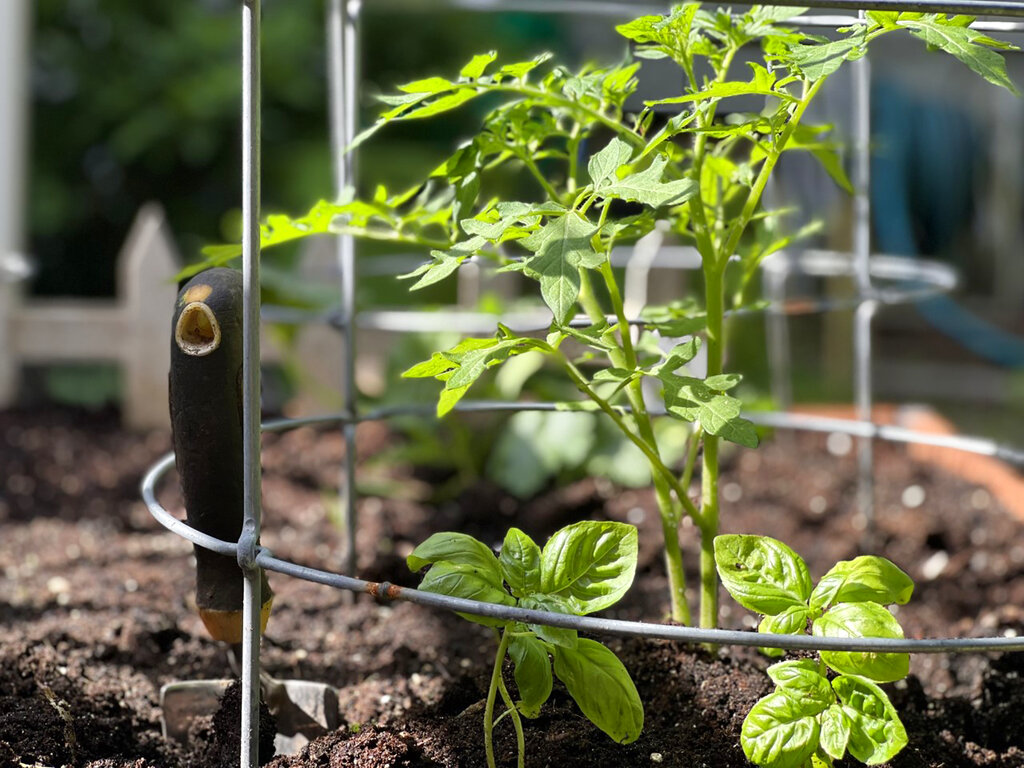
Different types of gardening are now trending in large segments of our society today. The increase in gardening interest has spawned concepts not usually considered when one mentions gardening. We have edible landscapes, raised bed gardening, and even vertical gardening.
One common factor in many of these styles of gardening is the actual garden space. Urbanization and community development have removed the traditional garden plot and encouraged gardening in smaller spaces.
Gardening in raised beds is one option addressing these constraints. Though not a new concept, raised bed gardening has been around for centuries. Raised beds offer the opportunity to increase production while reducing garden area. These bed surfaces are typically 6-12 inches above the existing ground level. They can be any size imagined by the gardener, but a bed no wider than four feet with any length allows tending from both sides and eliminates stepping in the garden area. Step-free garden soil reduces compaction, increasing soil aeration and plant productivity.
Raised beds offer gardeners several advantages. Raised beds warm up quicker in the spring allowing for earlier planting. These beds also allow the garden to be worked after a heavy rain because you are not actually walking in the garden area.
Framed raised beds are more effective for reducing erosion. Water will drain through the bed versus possible runoff, resulting in less frequent watering. Weeding and harvesting may be easier due to elevated surfaces. Framing material can be block, stone, brick, pavers, rot-resistant wood such as landscape timbers, or treated lumber. The framing material forms a retaining wall for the soil and a lip above the soil line to retain water. Caution: Treated lumber requires a plastic liner between the soil and the lumber due to possible chemical leachate.
Desired plantings for the bed will aid in determining the placement of the raised bed. Vegetables need a minimum of 6 hours of direct sun. Orienting the bed from north to south allows more even light as the sun travels over the bed. This orientation requires the placement of taller plants on the north end to increase light distribution and reduce shading for other bed plantings. The increased production can be attributed to literally planting wall to wall. The entire garden surface can be used.
Natural soil is not the best recommendation for a raised bed unless compost, organic material, peat moss, etc., is added to improve the soil. A good working soil will contain one part organic, one part sand, and two parts soil. A purchased soilless mixture will also work well, such as potting soil for containers.
Edible landscaping is just what it sounds like: utilizing plants in your landscape that can be used to provide food instead of plants that serve an ornamental purpose only. For example, plant a blueberry bush for an early blooming shrub. They do require more acidic soil than most plants. Be mindful of this if you select them for your landscape. Different varieties provide a longer season to enjoy the fruit. Strawberry plants can function as a groundcover in the right sunny, well-drained location with the bonus of fresh strawberries in the spring. Some varieties will produce fruit in the spring and fall.
Many vegetable crops perform nicely in mixed borders while providing eye appeal and fresh veggies for the table. Cabbage, lettuce, mustard, and kale can provide foliage colors other than green. Tomatoes and peppers, depending on the variety, produce fruit in an array of colors ranging from green, red, yellow, gold, orange, and even a dark purple-green. Herbs offer a variety of textures and fragrances as well as enhance the landscape. The choices can be endless. You can select the grass-like foliage of chives for fillers. The silvery foliage of lavender serves for accents and fragrances. The lacy foliage of dill provides an airy feel to any area of the landscape.
On a personal note, my mother allows for volunteer watermelons to grow along the edges of her landscape each year. Not only does this provide her with free watermelons throughout the season, it also gives her a “project” to work on during the summer with her grandsons. The watermelons are just another project to keep her active and busy, and my boys will always have the memories of working with grandma in her landscape.


